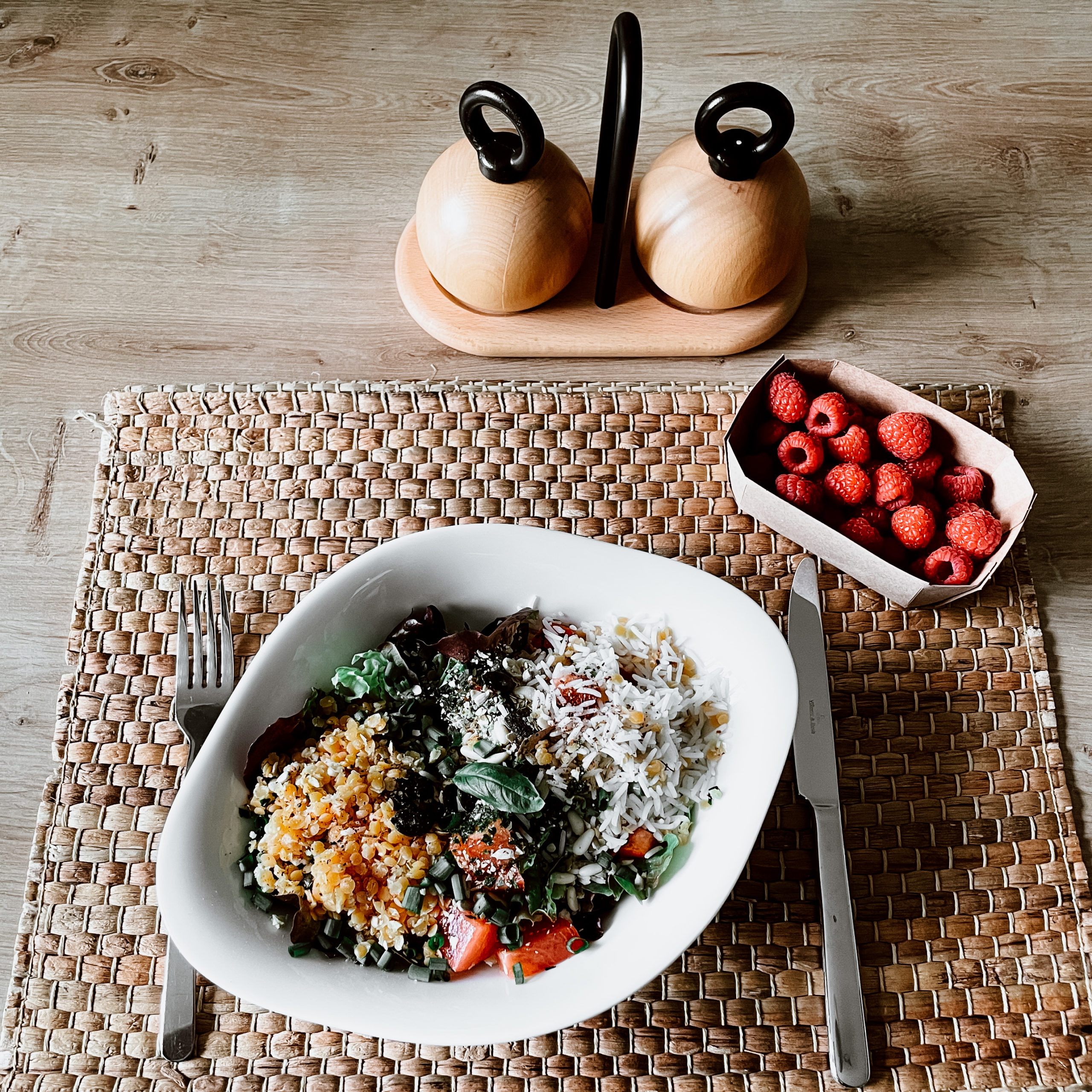“It is necessary to dare in all kinds, but the difficulty is to dare wisely”.
Bernard Fontenelle
Hello, young Padawan
If you have ever done a dry or water fast, a juice cleanse, or a mono-diet, you must have asked yourself: “But what do we eat at the end of a fast?”
These three fasting methods allow the body to slow down, clean up inside and give a new start. After a phase of digestive rest like this, there is no question of starting with a donut at the risk of breaking the world record for time spent in the toilet, lol.
Thus, with common sense, we suspect that we will have to wait a bit to wake up and gradually reintroduce the food on our plate. Yes, but which ones? The answers are here. Good reading.
Food recovery after a fast.
A food recovery following a fast is the period between the last day of your fast (dry or water, your juice cleanse, or your mono-diet), and a diet that will be considered normal and balanced. We will say that this period lasts 15 days for short fasts (fasts of a maximum of a week) and one month, or even more, for fasts of more than a week, but we will not talk about it here.
1/ Listen to your body
Whether it’s a mono-diet, a juice cleanse, or a dry or water fast, you know how it goes: when it’s time for your first meal, you crave healthy stuff; it’s like magic, lol. So, the end of the fast is an opportunity to take a quiet moment to think and let your body guide you.
For example, after a 5-day fast that ended Sunday evening, Monday morning, at 6:40 a.m., I was craving garlic. The naturopaths who read me here will have understood: my body tells me that there are some bad bacteria (candida albicans) in my intestine to kill. Except that at 6:40 a.m., eating garlic is a bit rough, lol. So I took some lemon water and a few strawberries and waited until midday to have a super champions salad and a fresh-squeezed garlic vinaigrette.
It is essential to pay close attention to our feelings of hunger, and we stop as soon as the body signals. The ideal is to stop a little before being “full.” If you need a hand, and especially to apprehend “the after,” you can go see this article here or there.
2/ The first week, no animal protein other than eggs (on day 3)
The first three days of a food recovery following a fast are based on an exclusively vegan diet.
Vegetable juices, raw vegetables, and fruits, the possibility of a bit of cooking if desired, a drizzle of oil with a high rate of omega 3 like rapeseed, camelina, or flax, midday and evening.
You can put seeds in the salad, such as pumpkin seeds, flax seeds, etc., herbs and spices, pepper, parsley, etc. Ideally, the dressing should be made with cider vinegar and oil with a high rate of omega 3, such as rapeseed or flax. Salt and pepper, ok. The mustard will depend on the fragility of your stomach. After fasting for five days, I have no problem with this, but be careful if this is your first fast and you have a fragile stomach, then stick to the oil/cider vinegar dressing.
From day 2, you can incorporate a little white rice (three tablespoons of white rice, not wholemeal: too much fiber) at lunchtime; and add some easy-to-digest legumes such as red lentils in the same quantity as the rice ( coral lentils that you rinsed for a long time and soaked overnight, then threw in a pot of boiling water, turned off the heat and left for 5 minutes before draining).
Always add some raw oil with a high rate of omega 3 for lunch and dinner or a little raw butter. Integration of a little oilseed is ok.
From day 4, you can add an egg, for example, to the midday meal.
We can reintegrate gluten, other animal proteins, tea, and coffee from day 7.
3/ From day 7: Eat low GI – an anti-inflammatory diet
Indeed, eating at a low glycemic index is key to maintaining the benefits of fasting for as long as possible. If you want a little more info on the low GI diet and understand the mechanisms, you can click here and there.
Adopting an anti-inflammatory diet is a real key to well-being, health, having good morale, great energy, and the skin of a Greek goddess or god. If you want to know more, you can take a look here.
If you’re wondering when it’s ok for alcohol, chocolate, pizza, or fries: beyond day 15 for a short fast and, as a general rule: when you feel it.
With these simple and common sense tips, I think you have all the keys to a good food recovery without technical incident, lol. It only remains for me to wish you a good weekend.
XO 🍓
PS : If you want to know more about a healthy diet and well-being in general and have some cool recipe ideas, I invite you to consult the “EAT” section, then “Recipes Index” on this blog.
Indeed, you will find all the recipes offered by seasonality and all the articles in the “Food and health” section at the end of the list.
You can also type whatever you want in the info bar; for example, if you type “soup,” “avocado,” “pan-fried,” “intestinal,” or even “inflammatory,” you will find all the corresponding recipes or articles.

Example of lunch, on day 2.
